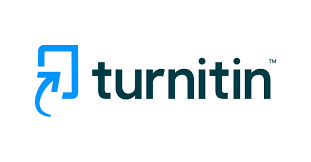Purple Corn (Zea mays indurata) Ice Cream as an Immune Booster in The Pandemic Era
Abstract
The COVID-19 pandemic has had an impact on public health. Immune resistance was a crucial factor in the pandemic era considering all diseases that arise as self-limiting diseases. Food as a source of nutrients had a vital role as an immunomodulator. As an agricultural country with food production commodities that were still massive, agricultural products are needed to develop food innovations, such as purple corn. One of the nutritional contents of purple corn was the flavonoid group in the form of anthocyanin compounds as a source of antioxidants to increase the body's immunity and prevent diseases caused by viruses, fungi, and bacteria, as well as prevent atherosclerosis, gastric damage, cholesterol, obesity, and others. Anthocyanin compounds in purple corn 70mg/100 grams. Anthocyanins in purple corn are processed into healthy food in ice cream with the product label "Purple Corn Ice Cream". This research aims to help people choose food innovations that can help them increase their immunity in the Covid-19 pandemic era. This ice cream product was formulated and has gone through several tests. The anthocyanin test results showed that the sample contained anthocyanins. The sensory test results stated that this product had a soft texture, milky smell, light purple colour, and sweet taste, so it was accepted and received a positive response from the community. Based on the total questionnaire assessment results, 88% of respondents. Purple Corn Ice Cream was expected to be a nutritious food innovation, popular with people regardless of age, practical, and durable with the content of flavonoid anthocyanin compounds in purple corn, which can improve the body's immune system during a pandemic.
Keywords
Full Text:
PDFReferences
Azima, S., Abdullah, N., Manshoor, N., 2014. Anthocyanin content in relation to the antioxidant activity and colour properties of Garcinia mangostana peel, Syzigium cumini and Clitoria ternatea extracts. International Food Research Journal 21, 2369–2375.
Barrowclough, R.A., 2015. The Effect of Berry Consumption on Cancer Risk. Journal of Nutritional Health & Food Engineering 2, 1–9.
Budiarto, H., 1991. Stabilitas Antosianin (Garcina mangostana) dalam Minuman Berkarbonat. Fakultas Teknologi Pertanian IPB.
Devagaran, T., Diantini, A., 2012. Senyawa Imunomodulator Dari Tanaman. Student e-Journal.
Hidayah, T., Pratjojo, W., Widiarti, N., 2014. Uji Stabilitas Pigmen dan Antioksidan Ekstrak Zat Warna Alami Kulit Buah Naga. Indonesian Journal of Chemical Science 3, 135–140.
Lestario, L.N., Rahayuni, E., Timotius, K.H., 2011. Kandungan antosianin dan identifikasi antosianidin dari kulit buah jenitri (Elaeocarpus angustifolius blume). AGRITECH 31, 93–101.
Ningrum, L., Rosavira, T., Pambudi, B., 2017. How The Panelists Votes Chicken Turkey and Duck. International Journal of Innovative Science and Research Technology 2.
Nursa’adah, I., Basuki, N., Sugiharto, A.N., 2017. Genetic Variability of Inbred Lines in S3 Generation of Purple Corn (Zea Mays var Ceratina Kulesh). Food Productions Journal 5, 506–514.
Praworo, K., 2011. Terapi Medipic, Medical Picture.
PT. Advanta Seeds Indonesia, 2019. Analisa Kandungan Jagung Ungu. Universitas Gadjah Mada: Laboratorium Fakultas Teknologi Pertanian.
Saira, S., Kamran, K.M., 2017. Stability of Anthocyanins from Syzygium cumini (Jamun) at Different Processing Condition. J. Food Technol Pres 2, 1–5.
Sari, P., Setiawan, A., Siswoyo, T.A., 2015. Stability and Antioxidant Activity of Acylated Jambolan (Syzygiuoloum cumini) Anthocyanins Synthesized by Lipase-Catalyzed Transesterification. International Food Research Journal 22, 671–676.
Sianipar, I., Restuhadi, F., Zalfiatri, Y., 2016. Analysis of Consumers Preference in Probiotic Ice Cream with the Addition of Encapsulated Lactobacillus acidophilus. JOM FAPERTA 3.
Tutunchi, H., Naeini, F., Ostadrahimi, A., Hosseinzadeh-Attar, M.J., 2020. Naringenin, a flavanone with antiviral and anti-inflammatory effects: A promising treatment strategy against COVID-19. Phytother Res 34, 3137–3147. https://doi.org/10.1002/ptr.6781
Wallace, T.C., 2011. Anthocyanins in Cardiovascular Disease. Advances in Nutrition 2, 1–7. https://doi.org/10.3945/an.110.000042
DOI: http://dx.doi.org/10.33512/fsj.v4i1.14207
Refbacks
- There are currently no refbacks.

This work is licensed under a Creative Commons Attribution-ShareAlike 4.0 International License.











